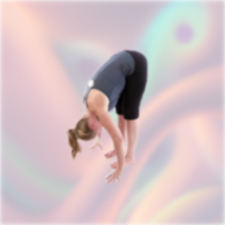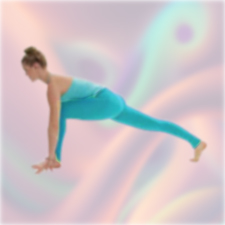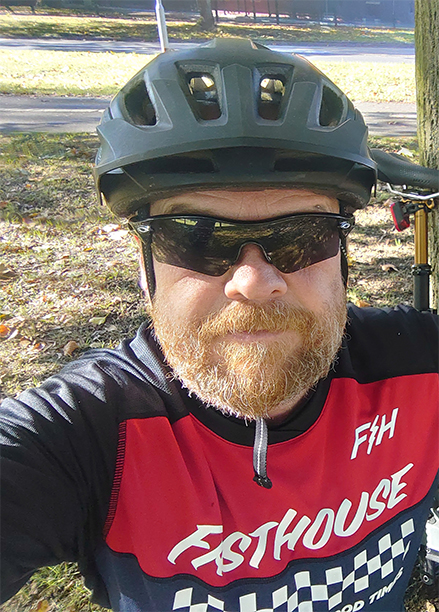
As a middle-aged man I feel the strains and aches that accompany a long ride, sometimes even on the short ones. I’m not as flexible as I once was and that combined with my sedentary job means that my muscles are all out of whack and what was once a nice relaxing ride can lead to grunting, groaning and generally wondering if this is my life now. Following a conversation with a fellow cyclist which involved a lot of my saying incredulously: “Me? Do Yoga?” and despite a mental image of me in lycra bent out of shape, I decided that maybe the benefits were worth it.
And so here is a 30 minute session to help work some of that flexibility back in:
Let’s Begin.
Yoga can be particularly beneficial for the back, which is a common area of discomfort for cyclists. The multi-directional mobility work in yoga helps to improve overall back health. Additionally, targeting areas like the hamstrings, quadriceps, hips, hip flexors, and glutes can help alleviate tightness and promote better cycling performance.
If you’re looking for a more aero and flatter-backed riding position, yoga can help with that too. The physical postures and movements in yoga can assist in achieving a more streamlined position, which is essential for time trial riders. Additionally, the breathing techniques used in yoga can aid in developing slower, deeper breaths while cycling.
So, even without incorporating the breathing and meditation elements, yoga can still greatly benefit cyclists by improving flexibility, relieving stiffness, addressing muscle imbalances, and potentially improving performance. Give it a try and see how it enhances your cycling experience!
There are various yoga styles to choose from, ranging from the intense and fast-paced Ashtanga to the slower ‘Yin’ style that involves holding deep stretches for up to five minutes. If you don’t currently engage in strength training, practicing the flowing styles like Ashtanga and Vinyasa can provide some strengthening benefits by targeting your core and shoulders with repeated planks and dogs. However, if you experience neck and shoulder tension, be cautious to avoid exacerbating it.
Keep in mind that certain yoga classes include numerous standing balancing poses, which can lead to fatigue in your legs. A balanced option is Hatha yoga, which typically incorporates dynamic warm-up movements followed by static stretches.
If you cycle regularly, it’s beneficial to incorporate both types of stretching. Dynamic stretching is excellent for warming up your muscles, while holding stretches is vital for maintaining or enhancing flexibility. The optimal duration for each stretch is still debated in sports science. A panel of experts from the American College of Sports Medicine recommends a maximum of 60 seconds, while others suggest that 20 seconds is sufficient. Additionally, research has shown that static stretching temporarily reduces muscle power. Hence, consider scheduling your yoga practice for after your ride, in the evening, or on a rest day.
The primary goal of yoga for cyclists is not to touch your toes but to prioritize your long-term riding comfort. Monica Dew, a Level 3 cycling coach at Clancy Briggs, a Doncaster-based cycling academy, understands the significance of introducing yoga to her young riders from an early stage. According to Dew, “Yoga is an incredible way to ensure that your body can endure the physical demands of cycling year after year. It’s crucial to stay flexible and enhance your recovery. It’s all about establishing healthy habits.”
Onto the Poses.
Below, you’ll find a yoga session specifically designed for cyclists. This session combines stretching and strengthening exercises. However, if you experience tightness in your upper back and shoulders from cycling, it is recommended to exclude the plank pose. Ideally, perform this session two to three times per week either after your ride or on a rest day.
STANDING BACKBEND
Here’s a pitstop stretch that can be done at the side of the road to ease the spine into extension and relieve an aching back. Extension, or back bending, feels great after hours in the saddle with a flexed spine and helps keep the back comfortable and mobile.

- Stand with your feet hip-width apart.
- Tuck your backside in.
- Place your palms on your lower back and lean slowly back.
- Hold for a few seconds and then return to standing upright.
STANDING FORWARD FOLD
An easy and accessible way to stretch the hamstrings, this pose also flexes the whole of the back of the body, including the upper back and neck. The model has her hands flat on the floor but you can also just let the arms dangle down or fold them to add more weight to the upper body element of stretch.

- Stand with your feet hip-width apart.
- Bend your knees a little.
- Slowly bend your upper body forwards and relax your head.
- Touch the floor, fold the arms or let them dangle.
- Take a few deep breaths.
- Bend your knees and rise up to standing with a straight back.
HIGH PLANK
The plank is a great all-round core strength exercise for cyclists, targeting abdominals, arms and shoulders. Postures like the plank also help with bone health and prevent osteoporosis, something that cyclists are at increased risk of due to the lack of weight bearing involved in riding.

- Start on all fours with your hands directly under your shoulders.
- Lift your knees on the floor.
- Line up the back of your head with your hips and heels.
- Hold for 30 seconds or longer.
RUNNER’S LUNGE
A simple runner’s lunge, performed correctly, will stretch the hip flexors, which help lift your leg on every pedal stroke. The trick to isolating these muscles is to first tuck the backside in before you slide forwards into the lunge, maintaining this pelvis position.

- Start on all fours.
- Step your right foot up in between your hands.
- Lift your upper body and place your hands on two yoga foam bricks, on your hips or behind your head.
- Tuck your backside in.
- Slide forwards into the lunge.
- Hold for 30 seconds or longer.
PIGEON POSE
Most cyclists get tight buttock muscles, or gluteus maximus, and sometimes soreness in a muscle called piriformis located right in the middle of the butt cheek (the one massage therapists lean their elbow into!). Pigeon pose is a great way to release both muscles.

- Start on all fours.
- Slide your right knee up behind your right wrist.
- Shuffle your right foot a little over to the left.
- Extend your left leg away until it straightens.
- Lower onto your forearms, stack one hand on top of the other and rest your forehead on your hands or straighten your arms above your head.
EXTENDED CHILD’S POSE
This gently flexed position is the perfect follow-up to Locust and Cobra. It allows the back to relax, and while reaching the arms above the head, stretches the shoulders and ‘lats’ or wing-like muscles that extend across the back.

- Start on all fours.
- Slowly sit back onto your heels and lower your forehead towards the floor. Take your knees wider if this makes the position more comfortable.
- Stretch your arms overhead, inching your fingers towards the top of the mat.
- Spread your fingers wide and press your palms into the mat.
- Hold for 30 seconds.
LOCUST POSE
Locust is a gentle back bend but also strengthens the back extensors, helping to bolster the back on long rides. Think about squeezing the shoulder blades together to release tension in this upper back area.

- Lie on your front with your forehead on the mat and your arms by your sides.
- Raise your head, arms and legs on the floor but remain looking downwards or just to the top of the mat.
- Hold for 20 seconds.
COBRA POSE
Cobra moves a rider’s back out of flexion and into extension and stretches the front of the torso. Cobra also strengthens the biceps and triceps. Don’t lift too high if you experience compression or discomfort in the lower back.

- Lie on your front with your forehead on the mat.
- Bend your arms and place your hands alongside your upper ribcage.
- Tuck your elbows into your sides.
- Press into your hands and slowly lift your upper body as high as is comfortable.
- Hold for 10 seconds then lower back down.
3 POSES TO AVOID
OK, you don’t need to avoid these poses completely, but they should be approached with caution. Getting them wrong could heap more tension on areas where cyclists are already tense, such as the lower back, neck and shoulders.
Downward dog
Often prescribed in yoga classes and held for long periods of time, this pose can add tension onto already fatigued shoulders and feel like a plank if the hamstrings are too tight to shift your weight back on your shoulders and onto your heels. Puppy Dog is a great alternative for cyclists, as it moves the spine into gentle extension from the flexed riding position. From all fours, simply lower the forehead towards the floor and straighten the arms overhead.
Sitting cross-legged
If you haven’t sat cross-legged since primary school, and when you try, your knees hover on the ground, opt instead for sitting with the soles of the feet together. Interlace your hands around your feet and lean slightly forwards.
Seated ‘toe-touching’ poses
If tight hamstrings prevent you from comfortably reaching for your feet and doing so strains your lower back, lie on your back and loop a towel or dressing gown belt around your right foot. Straighten the leg up towards the ceiling, or keep it bent. This will remove the lower back from the equation and isolate the hamstrings. You can also push your heel up to target your calves.
I hope you found this as helpful as I did. It most certainly helped me regain some of my lost flexibility and made those long rides more of a pleasure.

Andrew is the Marketing Manager at Cycle Revolution.
He commutes regularly to work on his Cannondale Topstone 2 and takes every opportunity to hurtle around on an MTB thinking he’s cool.








